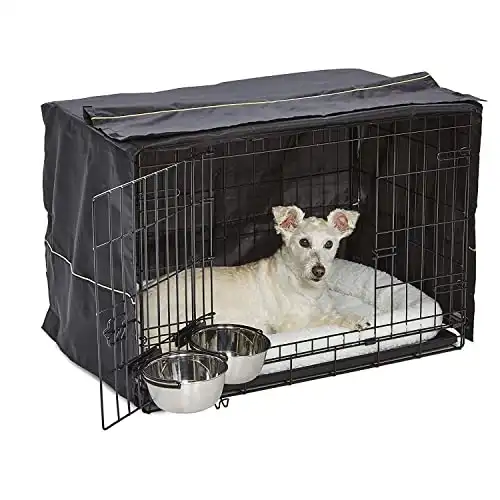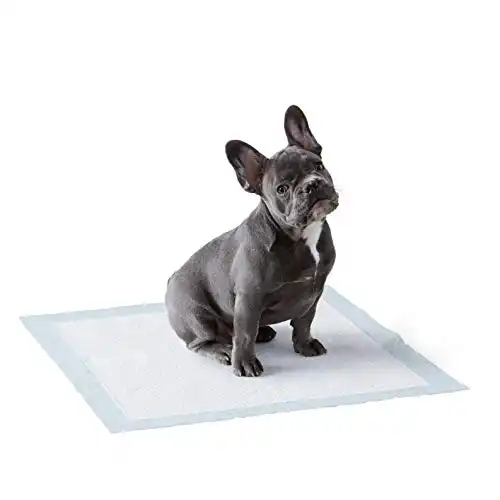Potty Training a Pug Puppy [6 ESSENTIAL TIPS]
For many people, training a dog begins early, when they are still a puppy. One of the first forms of training and one of the most important is potty training. Learning how to potty train a pug requires a bit of understanding, but it is definitely not impossible.
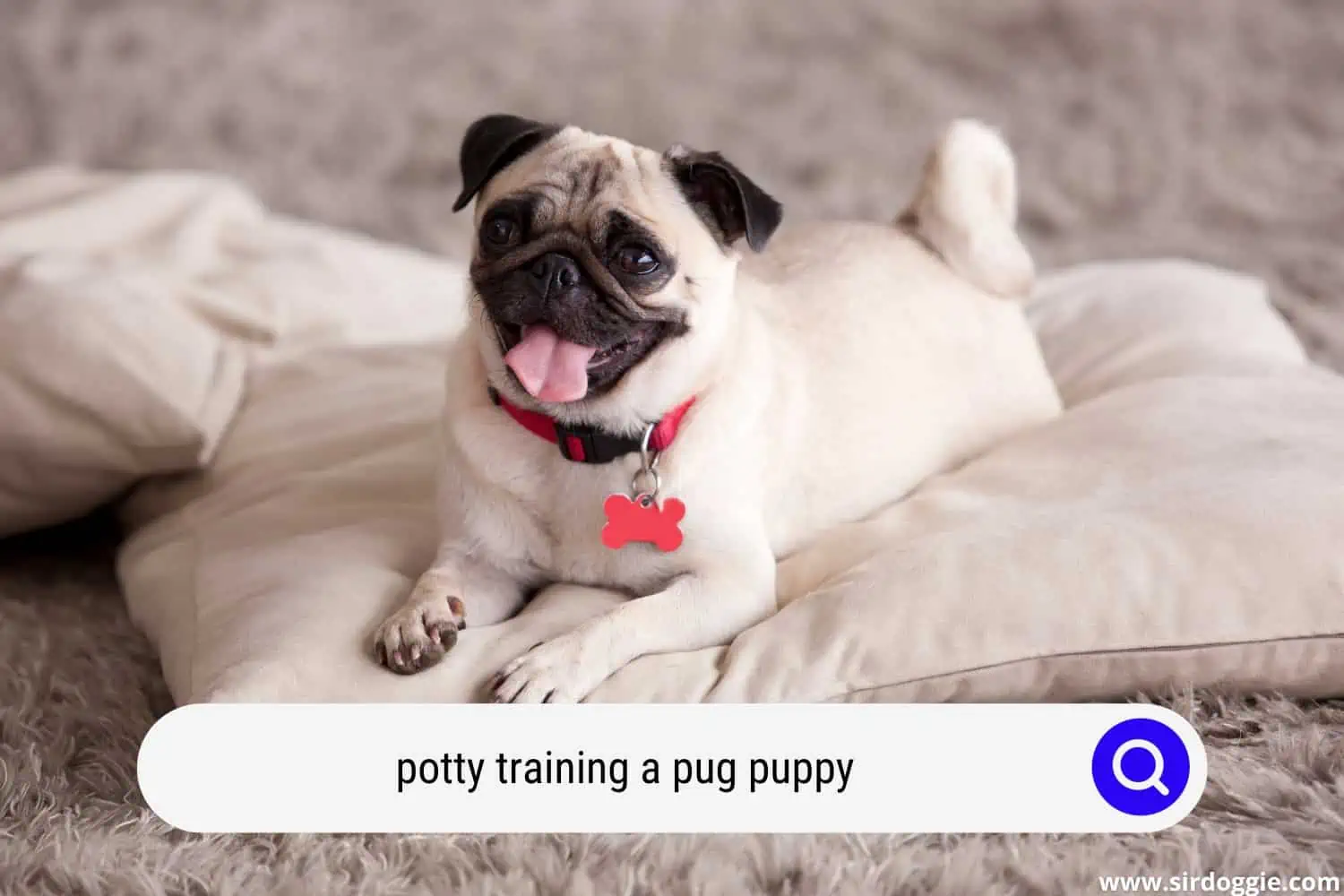
Pugs are highly intelligent dogs, but they are also known to be stubborn, so they may be harder to potty train than your average dog. But no fear, we are here to provide you with all the information you need to make sure your pug is well-trained and fully potty trained, with as little frustration as possible.
Pugs are small dogs and as a result, they also have small bladders. This means they will need to be taken out more often than other breeds.
They will need to be taught where it is okay to go to the bathroom and to understand how to ask to be let outside to go. This, like any type of training, is a process that will likely involve some setbacks, but with understanding, planning, and patience, you can potty train even the most stubborn pug puppy.
Let’s take a look at the best way to potty train a pug puppy, with advice from dog training experts.
Related Reading: How Big Do Pugs Get?
Tips For Potty Training a Pug Puppy
In order to successfully potty train a pug puppy, you will need a few supplies and a decent amount of patience. The main supplies you will need are puppy pads, some sort of crate or large carrier, and something like baby wipes or toilet paper.
One of the biggest keys to successful training of any sort is to make sure that you have a routine that you follow. Intermittent training is one of the worst ways to teach a dog, so you will need to create a solid routine and stick to it, otherwise, you are likely to have issues.
House training is an all-encompassing experience. You will want to plan your dog’s day around a potty routine. Knowing that they need to go to the bathroom every hour or two will also help you plan your routine.
Puppies often need to go to the bathroom as soon as they get up, even from a brief nap. Experts recommend that when you are potty training you take the dog out every time they wake up, as they are likely to need to go.
Not only do you want to take them out when they wake up, but you will also want to take them out if they are going to be unable to go outside for long periods of time, such as at night when you are sleeping.
Training experts recommend overdoing taking your pug puppy outside at the beginning of their potty training. While they may only need to go to the bathroom every hour or two, it is recommended to take them out every thirty minutes when you first begin training them.
Over time, you can increase the amount of time between trips outside as your puppy begins to understand and get used to the routine.
1. Consider Their Diet
What and when your puppy eats can also affect their bathroom needs. Many owners take their puppies outside about fifteen minutes after they eat or drink, as food and water move through a puppy’s immature digestive tract faster than it does in adult dogs.
It is recommended to put your dog on a feeding schedule as early as possible as this will help structure their day and routine. It will also help keep them from overeating, which can be an issue with this breed.
You don’t want to feed a pug puppy a large amount of food at a time as this will likely cause digestive distress. It is better to feed them smaller, more frequent meals if possible.
2. Consistent Training Is a Must (and the Benefit of Crate Training)
Since pug puppies have such small bladders, many people confine them to a smaller room or large crate while they are being potty trained and not allowed in the greater house unsupervised. They will have far fewer accidents if you start their training in this manner.
While it might seem mean to keep the dog in a crate, it isn’t what it initially sounds. The crate you choose should be really large and oversized, so the dog will have plenty of room to run around. Many people will put things like a dog bed or their favorite toy in the kennel to help create a positive environment. Over time, the pug is likely to go into the kennel with a simple command.
Putting potty pads, which are super absorbent, is important during this step of training as they provide your pug a place to use the bathroom if they are in their kennel and unable to be let out.
Some of the links in this post are affiliate, and we may earn a commission.
It may take some time to get your dog comfortable with the crate and experts recommend using treats to coax the dog into the kennel, combined with praise until they get used to it and know it is safe.
If you are leaving home or during the overnight hours, a crate is a great option for pugs as it will help prevent accidents from occurring around the house. Just make sure you regularly clean the crate and bed as Pugs can be heavy shedders.
You will want to immediately take your puppy outside when it is taken out of the crate. Use simple commands like “go potty” when taking your puppy from the crate outside. They will learn to associate this command with going outside to do their business.
Consistency is incredibly important when training any puppy, but especially so when training smart and stubborn dogs like pugs. You need to make sure your routine is consistent. This means always taking the dog outside when they are let out of their crate. Always use the same commands. Always letting the dog out after naps and meals, etc.
For pugs, it can even be helpful to always use the same door to exit the house.
3. More On Puppy Pads
Puppy pads, as we mentioned earlier, are highly absorbent pads that make accidents easy to clean up. Using puppy pads at the start of training is a great way to begin the process. Some people start them off by going to the bathroom somewhere inside on a puppy pad.
Over time, they will begin to associate the pad with an approved place to go to the bathroom. Next, you will take the dog and the pad outside until they get more used to the idea of going outside.
Once they start going outside, you can remove the puppy pads completely. This is not recommended as a long-term or permanent solution for dogs.
4. How to Know When They Need to Go
We mentioned earlier that a pug puppy’s bladder is rather small so they need to go to the bathroom more often than larger dogs and other breeds. Knowing that they are likely to need to use the bathroom upon waking from a nap or shortly after a meal is helpful, but this isn’t going to be the only time they need to go to the bathroom.
There are a few key signs you can watch out for to know when your puppy needs to go to the bathroom.
One of the biggest signs is if you find them sniffing around an area of your home where they have previously had an accident or gone to the bathroom. If you notice this behavior, immediately take your puppy outside. Even if they don’t need to use the bathroom, it is helpful to remove them from the area, and take them somewhere else, allowing them to lose interest.
Sniffing the floor is a common sign that your dog needs to use the bathroom. Outside, you will notice they often sniff around before choosing a spot to relieve themselves and you can assume that when you see them doing this inside, it is for the same reason.
Another sign your puppy needs to use the bathroom is restless or anxious behavior. Just think about when your bladder is full and you need to go. When it gets really bad, we often start dancing around uncomfortably. Dogs will do the same thing.
The puppy circling the room repeatedly is also another indicator that they may need to go to the bathroom.
It is better to be proactive and take the dog out when they don’t actually need to go than run the risk that they do, and will do their business inside.
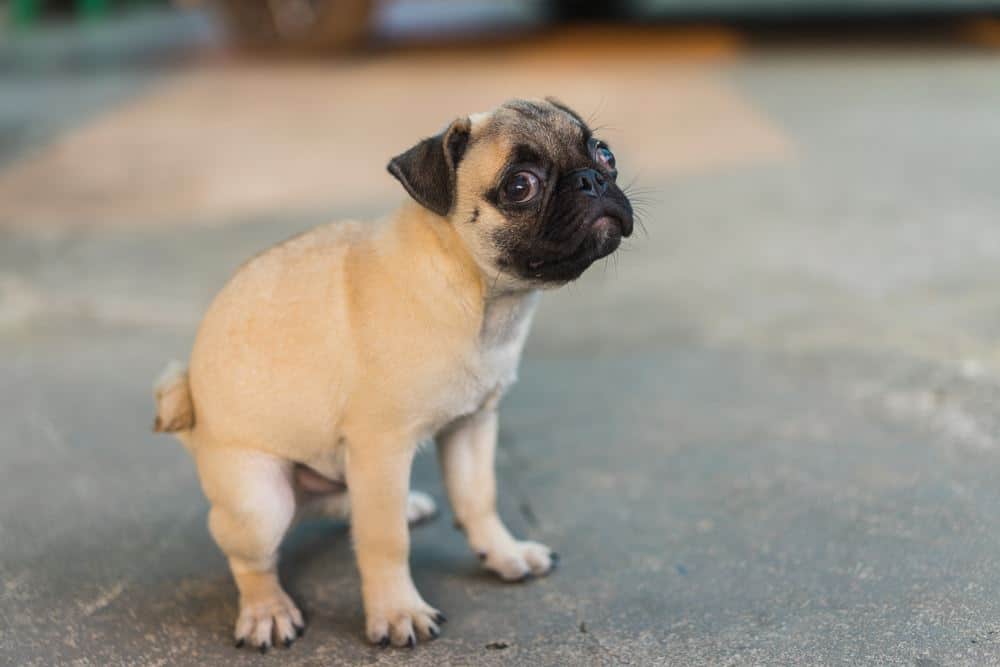
5. Accidents
No matter how well you do at potty training your puppy, chances are, they will have a few mistakes. This is normal and while it is natural to be irritated at this behavior, it is important that you don’t lose your temper and punish the animal.
Punishment is not a recommended way to get a dog to change its behavior. If you get angry at your dog, yell at them, or punish them, it is likely to scare them. By scaring them, you are actually making it more likely that they will have further accidents.
If the puppy does have an accident, the best way to handle it is to give them a firm, negative command such as “no, bad” and immediately take them outside. It might seem pointless since they have already had an accident, but taking them to the approved area, even after an accident, stands to further reinforce the idea that going to the bathroom happens outside.
6. Rewards and Commands
Positive reinforcement, or rewards, is one of the most effective ways to provide your puppy with positive feedback so they know they have done the right thing. Rewards can be really helpful during the potty training process, so it is important to make use of this powerful tool.
Anytime your puppy goes to the bathroom outside, reward them with a treat or praise. Any time the puppy goes to the door or finds a way to let you know they need to go outside, give them a treat or praise.
Many people who have employed positive reinforcement note that they have far more success with training their puppies and it often takes less time as well.
You will also want to make use of consistent, short commands. Before you take your dog outside, you may command them “outside” to get them to come to the door.
When they are outside, a short, brief command like “go potty” is also helpful. It gives the puppy a verbal cue to what is expected of them. This, combined with rewards of positive reinforcement will help cement the behavior.
It is important to keep the commands short and simple and to use the same command every time. This consistency makes it easier for the puppy to understand what is expected of them.
When Should You Start Training and How Long Does It Take?
Most experts recommend that you start training your pug puppy at around 12-16 weeks old. This is the time when the puppy has enough control over their bladder that they can begin to learn how to go to the bathroom outside.
It usually takes about 4-6 months to fully potty train a puppy. It may take more or less time depending on your specific animal, but most dogs are trained within this period.
If the dog starts its potty training later than the recommended 12-16 weeks, they may have developed a number of bad habits that you will have to help them unlearn. For dogs in this category, you should expect potty training to take a bit longer.
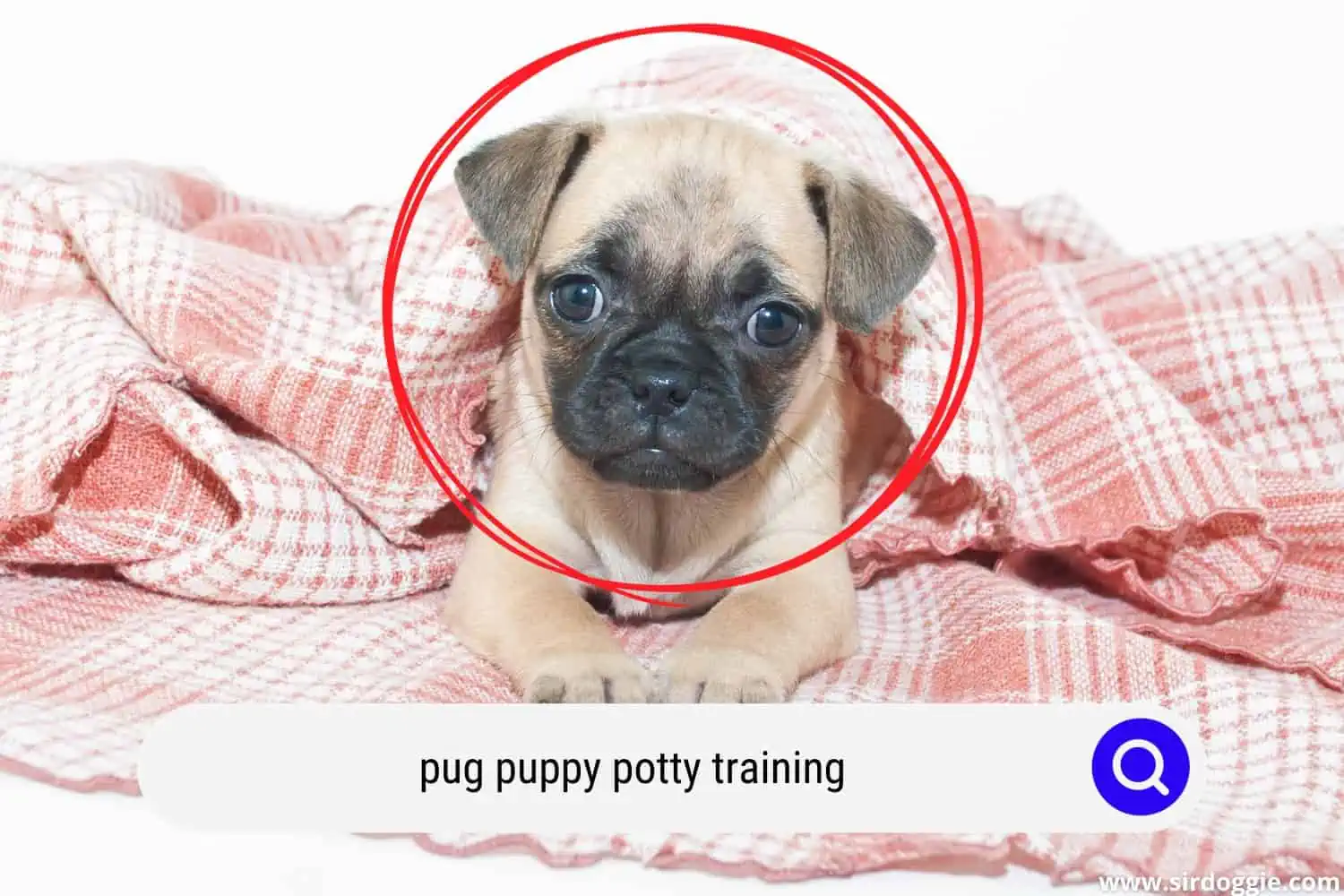
Final Thoughts
Potty training your pug puppy is one of the most important things you will teach your dog. While pugs are known for being highly intelligent and affectionate, they are also known to be stubborn, which can make potty training a bit more difficult.
Having a solid routine in place, what the right tools for the job, will help ensure that potty training goes as smoothly as possible.
Knowing how to teach your puppy simple commands and to reward them when they follow through will help make this process as simple as possible and take less time. Using the tips given in this piece will arm you with the information you need for successful pug puppy potty training.

Family Dog Expert Author
Hi there! I’m Stuart, a devoted dog lover and family dog expert with over a decade of experience working with our furry companions. My passion for dogs drives me to share my knowledge and expertise, helping families build strong, loving bonds with their four-legged friends. When I’m not writing for SirDoggie, you’ll find me hiking, playing with my beautiful dog, or studying music.
